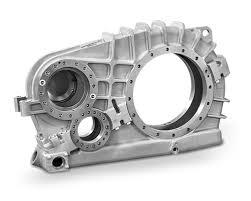High pressure casting is a vital manufacturing process that has transformed the way industries produce metal parts. Known for its speed, precision, and ability to create complex shapes, this technique is a go-to method in sectors such as automotive, aerospace, and consumer electronics.
What is High Pressure Casting?
At its core, high pressure casting involves injecting molten metal into a mold at very high pressures—often thousands of pounds per square inch. This rapid, forceful injection ensures that the metal fills every detail of the mold, producing parts with tight tolerances, smooth surfaces, and excellent mechanical properties.
Unlike traditional gravity casting, where molten metal is poured into a mold and allowed to flow naturally under gravity, high pressure casting uses hydraulic or mechanical systems to drive the metal quickly and forcefully. This results in a denser, stronger casting with fewer defects.
How Does the Process Work?
The high pressure casting process generally follows these steps:
-
Melting: Metal alloys such as aluminum, magnesium, or zinc are heated until molten in a furnace.
-
Injection: The molten metal is injected into a steel mold cavity under high pressure using a piston or plunger.
-
Cooling and Solidification: The metal rapidly cools inside the mold, solidifying into the final shape.
-
Ejection: Once solidified, the mold opens, and the casting is removed for further finishing.
This process can be repeated quickly, enabling mass production of components with consistent quality.
Key Benefits of High Pressure Casting
-
Precision and Detail: High pressure casting produces parts with excellent surface finish and dimensional accuracy, reducing the need for secondary machining.
-
Complex Designs: The process allows manufacturing of intricate and thin-walled parts that are lightweight yet strong.
-
Enhanced Strength: The pressure helps eliminate porosity, increasing the durability and structural integrity of the casting.
-
Efficiency: Faster cycle times compared to other casting methods make it ideal for high-volume production.
-
Material Savings: Precise mold filling reduces waste and lowers overall material costs.
Common Applications
High pressure casting is extensively used in:
-
Automotive Manufacturing: Components like engine blocks, transmission cases, and wheel rims are made using HPC due to their demand for high strength and lightweight properties.
-
Aerospace: Lightweight structural components and housings for avionics benefit from this technology.
-
Consumer Electronics: Complex housings and frames with fine details are produced efficiently.
-
Industrial Equipment: Durable and precise parts for machinery and tools.
Challenges to Consider
While highly efficient, high pressure casting requires significant upfront investment in molds and machinery. Proper process control is critical; parameters such as injection speed, metal temperature, and pressure must be optimized to avoid defects like cold shuts or air entrapment.
The Future of High Pressure Casting
Advancements in automation, simulation software, and materials are continuously improving high pressure casting. New alloys and hybrid casting techniques are being developed to meet growing demands for lighter, stronger, and more environmentally friendly products.
In summary, high pressure casting is a powerful manufacturing process that combines speed, precision, and strength. By forcing molten metal into molds under extreme pressure, industries can create complex, high-quality metal parts that meet today’s demanding standards. Whether in cars, airplanes, or everyday electronics, this method is shaping the future of metal manufacturing.

